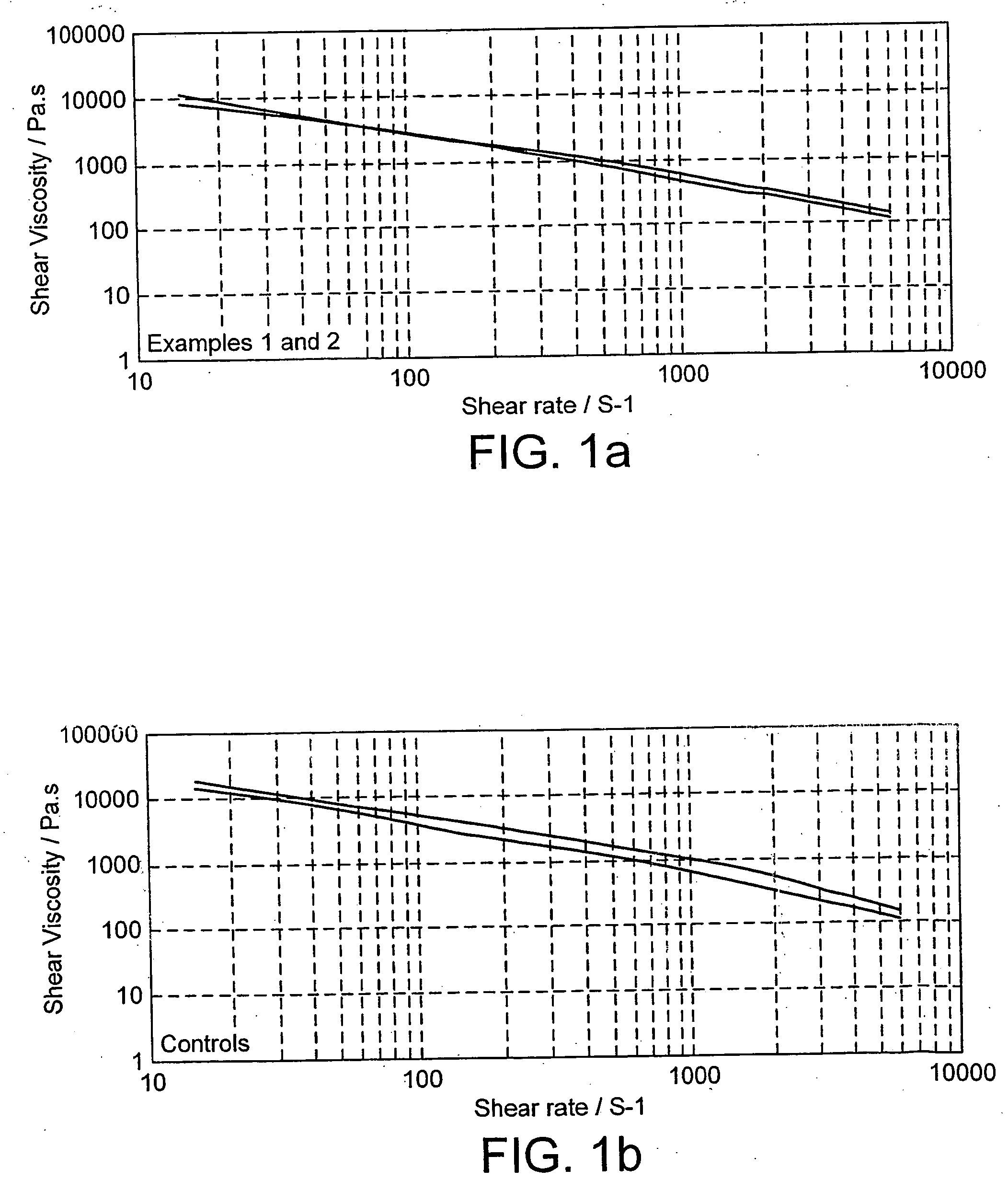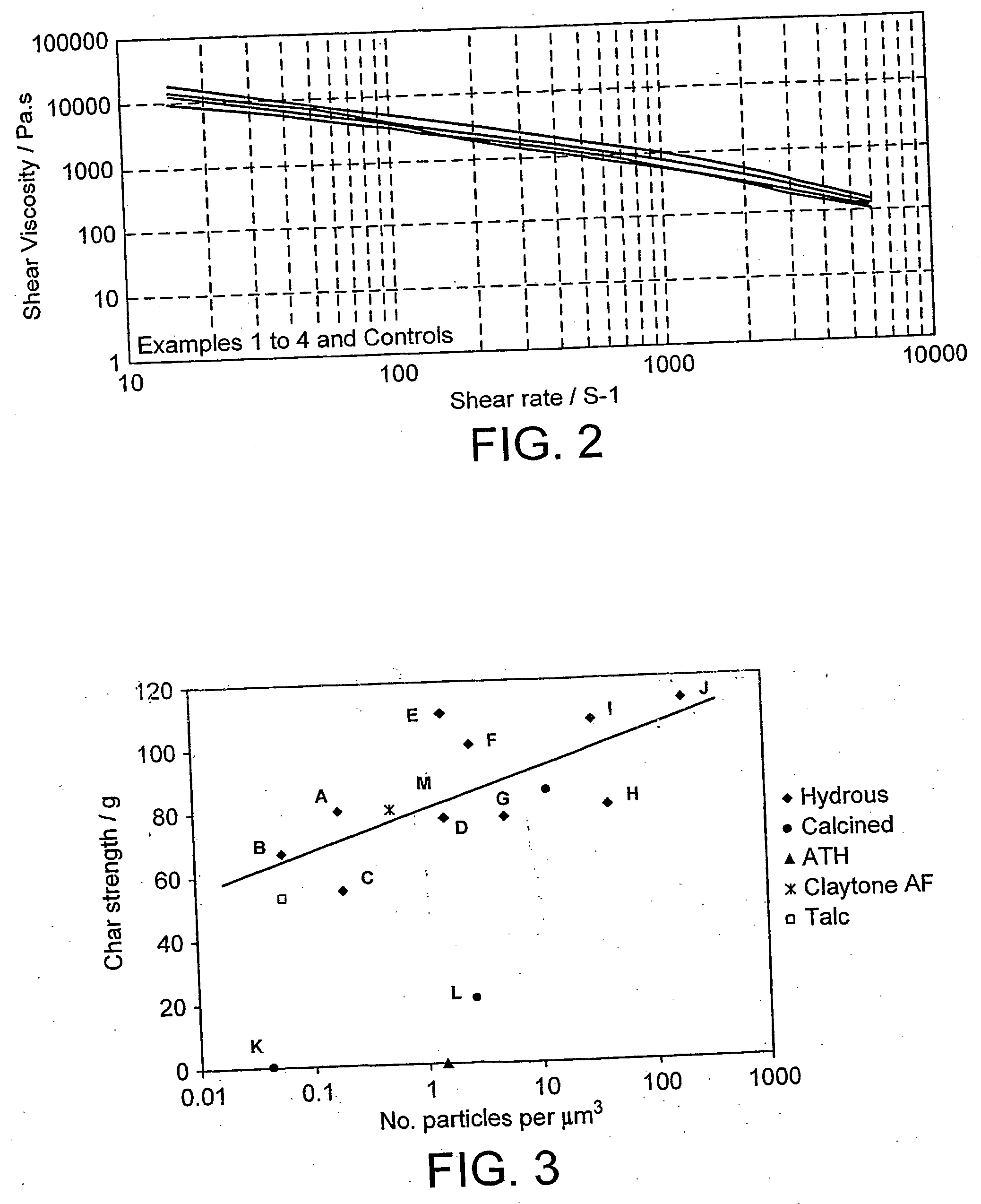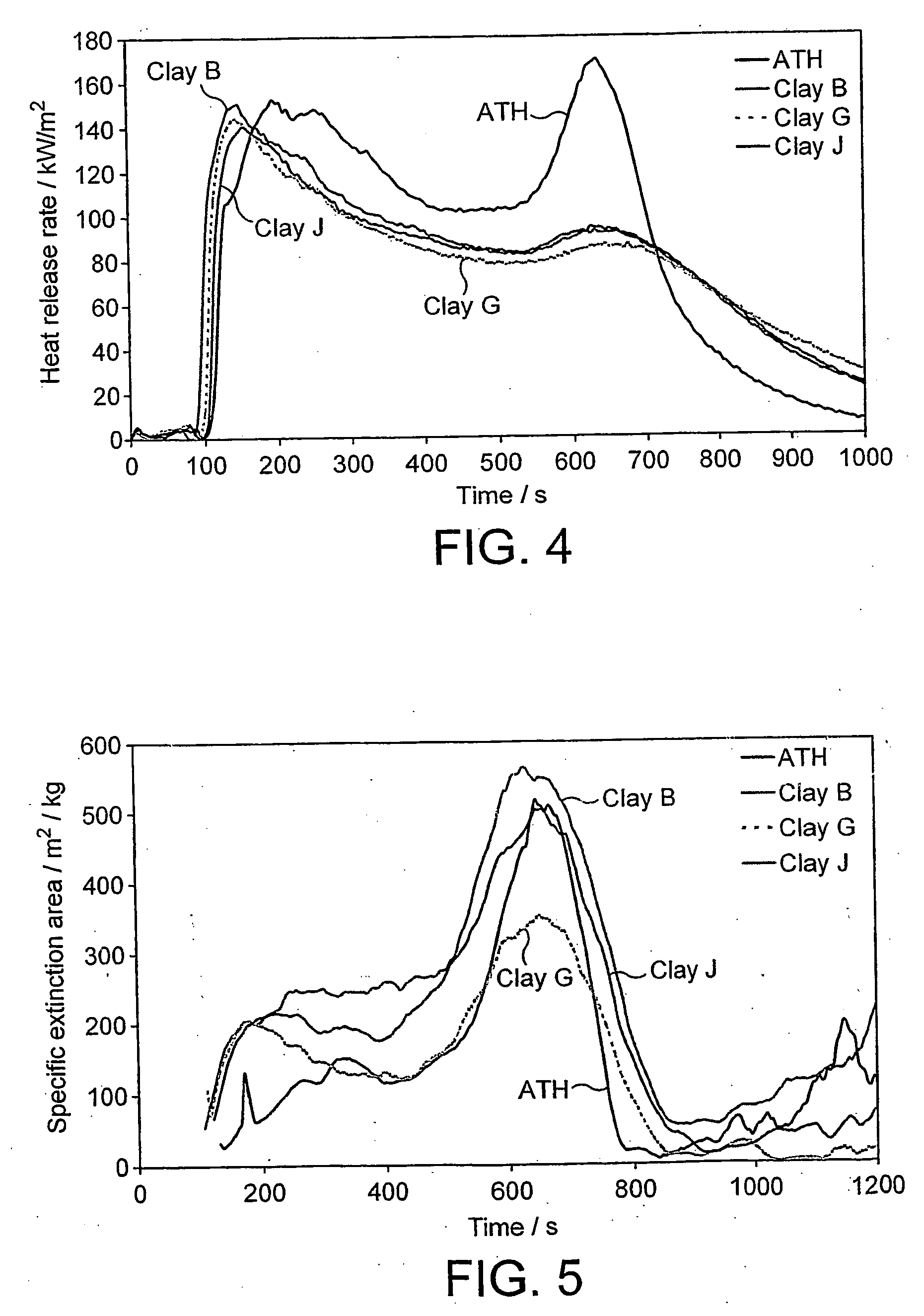Flame retardant polymer compositions comprising a particulate clay mineral
a technology of particulate clay mineral and composition, which is applied in the direction of fireproof paints, etc., can solve the problems of affecting the surface finish of the composition, affecting the effect of the composition, and not entirely satisfying the known additives
- Summary
- Abstract
- Description
- Claims
- Application Information
AI Technical Summary
Benefits of technology
Problems solved by technology
Method used
Image
Examples
examples 1 to 4
[0086] The materials used for FIG. 1(a) and included also in FIG. 2 were prepared by compounding the following thermoplastic polymers with Clay A at a loading of 61% clay by total weight of the composition: Example 1 used Escorene UL0019; an ethylene-vinylacetate copolymer available from Exxon Corporation, and the composition also contained 2% by weight of AC400, which is an ethylene-vinylacetate co-polymer (available from Honeywell), as a plasticiser; Example 2 used Clearflex Linear Low Density Polyethylene (CLDO), available from Polimeri Europa, and the composition also contained 2% by weight of AC6, which is a polyethylene homopolymer (available from Honeywell), as a plasticiser. A conventional Brabender mixer was used for the compounding.
[0087] The composition of Example 3, one of the further compositions according to the invention included in FIG. 2, was prepared by compounding Escorene UL0019 with a 50:50 by weight mixture of powdered ATH and Clay A at a total filler loading ...
example 19
[0119] The polymer formulation used in this Example is shown in Table 4 below:
TABLE 4phrMaterialRole(active)wt %Escorene UL00119EVA resin10037.84Filler (ATH and / or clay)Flame Retardant Filler16060.54Irganox 1010Antioxidant10.38Perkadox BC40-40MB-grDicumyl peroxide0.030.03(40% active)Tri-(2 methoxyethoxy)Dry Silane coupling agent1.61.21vinyl silane(50% active)
[0120] Irganox 1010 is available from Ciba, tri-(2 methoxyethoxy) vinyl silane is available from Kettliz, Perkadox BC40-40MB-gr is available from Akzo-Nobel.
PUM
| Property | Measurement | Unit |
|---|---|---|
| particle number per unit volume | aaaaa | aaaaa |
| mean equivalent particle diameter | aaaaa | aaaaa |
| mean equivalent particle diameter | aaaaa | aaaaa |
Abstract
Description
Claims
Application Information
 Login to View More
Login to View More - R&D
- Intellectual Property
- Life Sciences
- Materials
- Tech Scout
- Unparalleled Data Quality
- Higher Quality Content
- 60% Fewer Hallucinations
Browse by: Latest US Patents, China's latest patents, Technical Efficacy Thesaurus, Application Domain, Technology Topic, Popular Technical Reports.
© 2025 PatSnap. All rights reserved.Legal|Privacy policy|Modern Slavery Act Transparency Statement|Sitemap|About US| Contact US: help@patsnap.com



